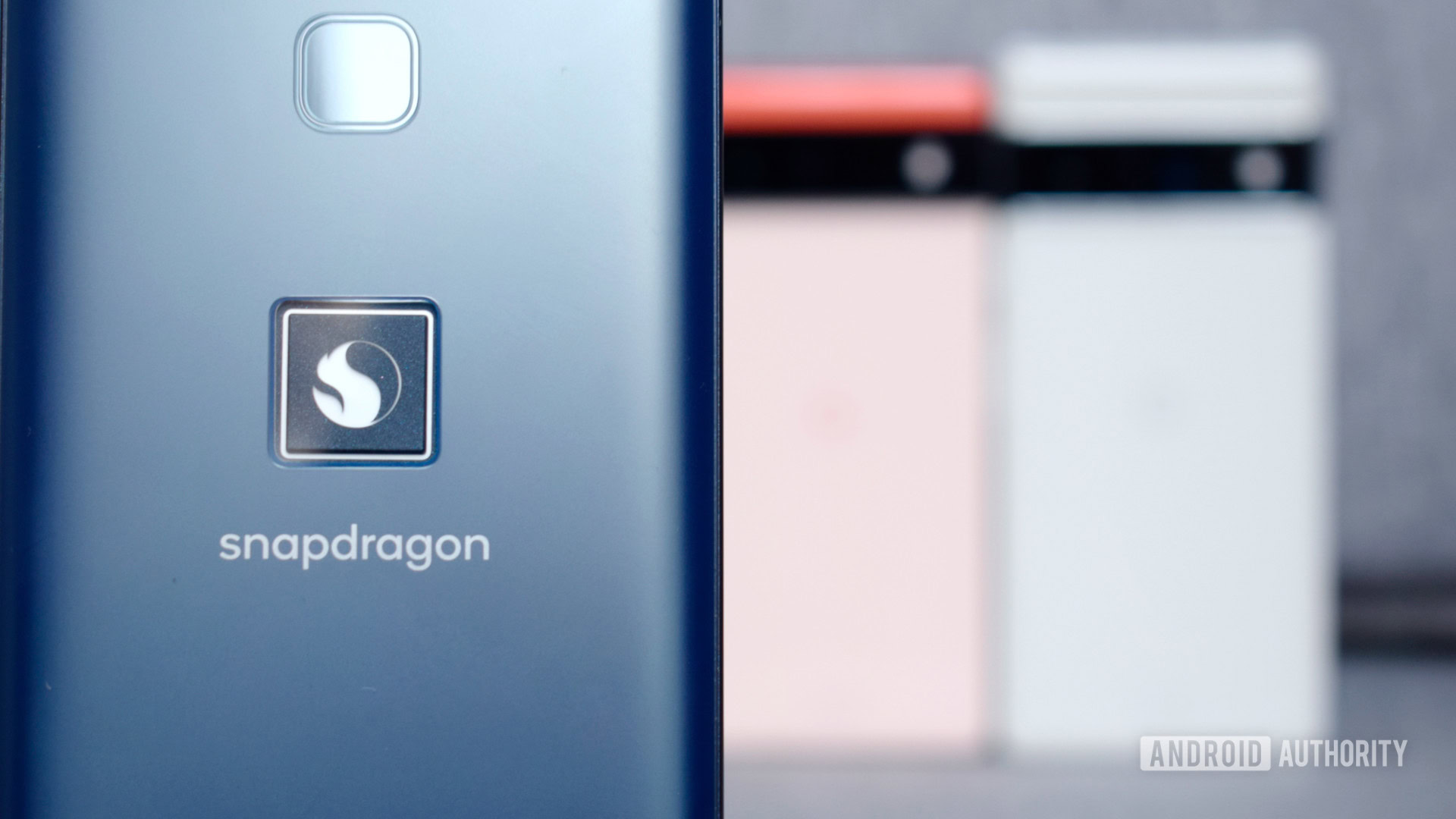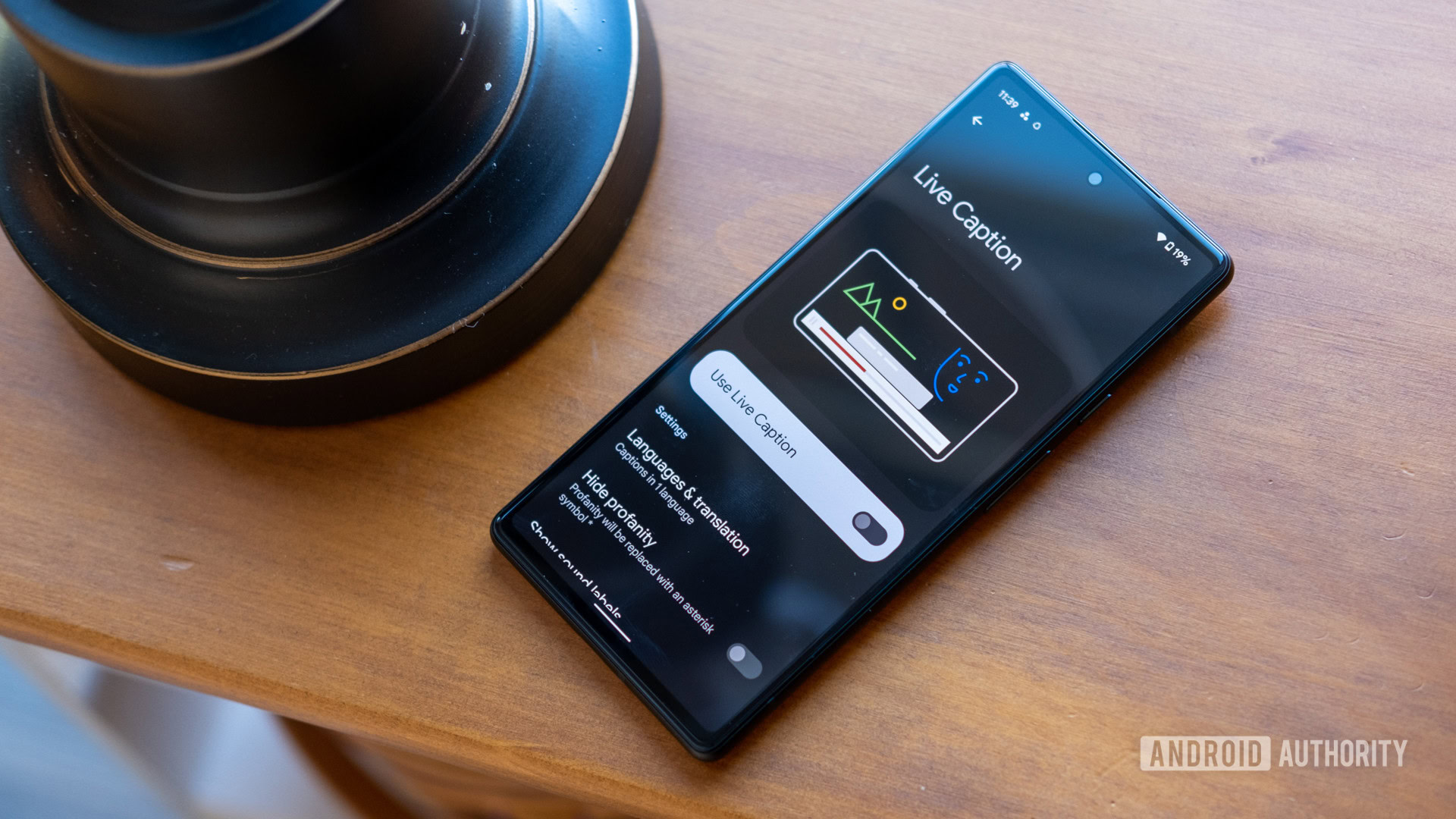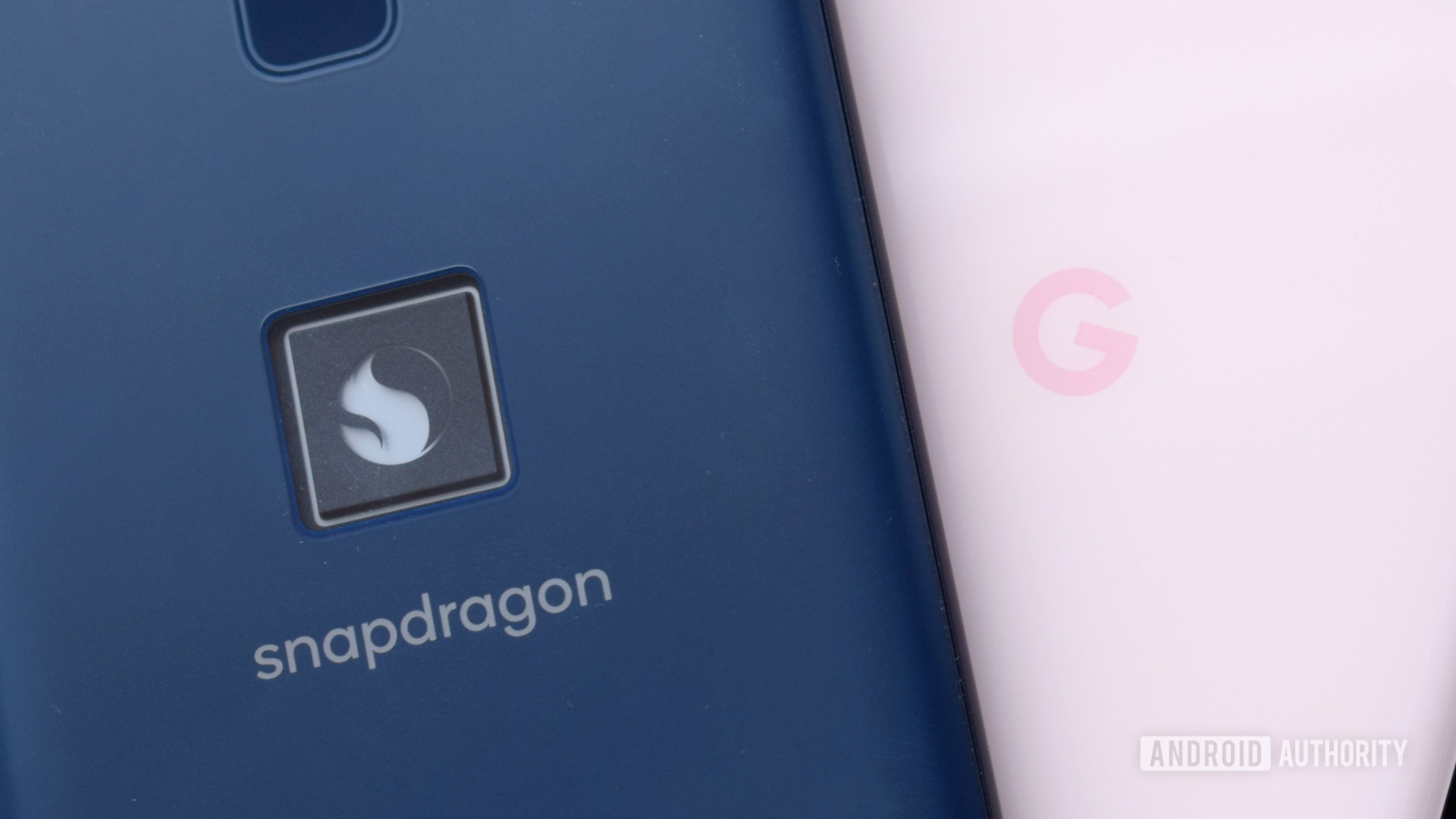Affiliate links on Android Authority may earn us a commission. Learn more.
Snapdragon 8 Gen 1 vs Google Tensor: Is the Pixel 6 outdated?

Qualcomm’s Snapdragon 8 Gen 1 arrived just a couple of months after Google released its first semi-custom SoC. The timing inevitably calls into question whether Google’s 2021 hardware is completely outclassed by the competition or not. While we’re well past the point of “good enough” smartphone performance, new hardware drives innovation forward and it’s often the only way to experience new cutting-edge use cases.
Boasting in-house machine learning smarts, Google’s Tensor SoC represents the company’s first foray into the mobile chip market, with some standout features in the Pixel 6 and Pixel 6 Pro. But did Google’s custom silicon become eclipsed by Qualcomm’s 2022 flagship processor? Read on to find out.
Editor’s note: Google and Qualcomm have released newer and upgraded chips since the original publication of this article. The Tensor G2 and Snapdragon 8 Gen 2 power the Pixel 7 series and 2023 flagship phones respectively.
Snapdragon 8 Gen 1 vs. Google Tensor specs
| Snapdragon 8 Gen 1 | Google Tensor | |
|---|---|---|
CPU Config | Snapdragon 8 Gen 1 1x Arm Cortex-X2 (3.0GHz) 3x Arm Cortex-A710 (2.5GHz) 4x Arm Cortex-A510 (1.8GHz) | Google Tensor 2x Arm Cortex-X1 (2.80GHz) 2x Arm Cortex-A76 (2.25GHz) 4x Arm Cortex-A55 (1.80GHz) |
GPU | Snapdragon 8 Gen 1 Adreno | Google Tensor Arm Mali G78 MP20 848 MHz (shader clock) 996 MHz (tiler clock) |
AI | Snapdragon 8 Gen 1 Hexagon DSP | Google Tensor Google TPU |
RAM support | Snapdragon 8 Gen 1 LPDDR5 @ 3,200MHz | Google Tensor LPDDR5 |
4G/5G Modem | Snapdragon 8 Gen 1 X65 LTE/5G (integrated) 10Gbps down (mmWave) 10CA in 5G 4x4 MIMO Up to 256-QAM in sub-6GHz Standalone and Non-Standalone | Google Tensor Exynos Modem 5123 (external) 7.35Gbps down (mmWave) 5.1Gbps down (sub-6GHz) 8CA in 5G 4x4 MIMO Up to 256-QAM in sub-6GHz Up to 64-QAM in mmWave Up to 1024-QAM in 4G Standalone and Non-Standalone |
Other networking | Snapdragon 8 Gen 1 Bluetooth 5.2 Wi-Fi 6E, Wi-Fi 6 (802.11ax), Wi-Fi 5 (802.11ac), 802.11a/b/g/n | Google Tensor Bluetooth 5.2 Wi-Fi 6E, Wi-Fi 6 (802.11ax), Wi-Fi 5 (802.11ac), 802.11a/b/g/n |
Process | Snapdragon 8 Gen 1 4nm (Samsung) | Google Tensor 5nm (Samsung) |
Snapdragon 8 Gen 1: A true flagship Android SoC
Browsing the spec sheets, it’s immediately obvious that there are some clear and obvious design wins for Qualcomm’s flagship processor. The CPU setup embraces the newer Armv9 architecture, complete with a more powerful Arm Cortex-X2 CPU, three Cortex-A710s, and three more efficient little Cortex-A510 cores. With the Snapdragon 8 Gen 1 touting 20% CPU performance gains and 30% energy-efficient improvements over its predecessor, due in part to the upgraded Samsung 4nm process, Qualcomm’s chip outdoes Tensor in benchmarks.
Although we shouldn’t discount Google Tensor’s performance here. The Arm Cortex-X1 core is still perfectly fast, and Google’s chip has two of them, which, in some workloads, may outperform the Snapdragon 8 Gen 1’s single beefy core approach.
The Snapdragon 8 Gen 1 benefits from newer Armv9 CPU cores than the Google Tensor.
You can expect a similarly competitive performance in the graphics department. Benchmarks put the large 20-core Mali-G78 Google Tensor a little ahead of 2021’s Snapdragon 888. But with a 30% graphics boost, the Snapdragon 8 Gen 1 regains that crown handily. We’ve also observed that the Pixel 6 doesn’t sustain peak performance for very long, while Qualcomm’s chipsets could go the extra mile with adequate cooling hardware. Qualcomm’s mid-year refresh of its flagship SoC improved that even further, but more on that later.
Broadly speaking, the Snapdragon 8 Gen 1 outperforms Google Tensor in core metrics but not by a huge amount. Perhaps more importantly, though, Google’s chip clearly excels in some specific use cases that leverage the chip’s more unique machine learning-oriented design. Comparing machine learning chops is very difficult due to the variety of use cases and different integration strategies. Benchmarks also often struggle to capture the requirements of real-world use cases.
Google leans on its own in-house Tensor Processing Unit (TPU), while Qualcomm offers dedicated ML capabilities in its ISP, DSP, and other departments. Either way, both are very capable here, although we should note that third-party developers currently can’t tap directly into Google’s TPU to make the most of it.
There are also some key similarities on the security side. Tensor features Google’s Titan M2 security enclave for tamperproof credential storage and processing. Qualcomm now offers its own Trust Management Engine with support for Android Ready SE, which opens the door to similar use cases, including on-device ID storage and iSIM support.
Where the Snapdragon 8 Gen 1 does take a more clear-cut lead is in the 5G networking department. With a Release 16-class modem sporting 10 carrier aggregation and mmWave and sub-6GHz band blending, Qualcomm’s chipset offers peak downloads of 10Gbps. Google Tensor isn’t far off from the mark on paper. Its Exynos Modem 5123 offers fast 7.35Gbps mmWave and 5.1Gbps sub-6GHz speeds, as well as 1024QAM 4G/LTE for users outside of 5G coverage.
However, Google’s Pixel 6 series features a cut-down implementation on the radio side and is locked to sub-6GHz 5G in most of the world. We also noticed plenty of connectivity issues with Pixel 6 devices in the real world. Outside of 5G, both chipsets sport the same Bluetooth 5.2 and Wi-Fi 6E capabilities.
On the camera front, Qualcomm’s improved 18-bit imaging pipeline sounds technically impressive but it’s up to partners to implement. Similarly, the Snapdragon 8 Gen 1 can do 4K 120fps and 8K 30fps with HDR, while the Pixel 6 series caps video capture at 4K 60fps. Qualcomm also packs a 4K video bokeh engine into the chip, enhanced AI face detection capabilities, and 30 frame multi-frame HDR and night capabilities. Not forgetting object segmentation and super res zoom features to rival those you’ll find in the Google Pixel 6. Once again, though, Qualcomm’s partners need to individually leverage these capabilities.
Feature-wise, there are small design wins for both chipsets.
When it comes to multimedia, Qualcomm’s partners can also take advantage of aptX Lossless and Snapdragon Sound for improved Bluetooth audio quality. However, the Snapdragon 8 Gen 1 doesn’t have it all its own way in this segment. Google Tensor packs the ability to natively decode the AV1 video codec for the latest streaming video compression. The Snapdragon chip does not.
Google Tensor: Bespoke for Pixel

While the Snapdragon 8 Gen 1 may have newer processing chops, it’s down to Qualcomm’s partners to get the most out of the chip, either by leveraging Qualcomm’s or third-party IP and software or by building their own handset-specific features on top of Snapdragon hardware.
Historically, this has been a source of disappointment, as smartphones have seldom leveraged all the best technologies Qualcomm’s platforms have to offer, be that with 5G capabilities, audio quality, machine learning use cases, or imaging smarts. 2021’s Smartphone for Snapdragon Insiders showcased many of Qualcomm’s technologies seldom seen in other handsets, including aptX Adaptive, Quick Charge 5 charging, and object tracking video autofocus. However, even with Qualcomm at the helm, the experience wasn’t exactly brilliant, proving it’s easier said than done to make the most out of a mobile platform.
Much like Apple, Google is reaping the benefits of custom hardware to power unique mobile use cases and extend updates.
Google has no such problem. Tensor and its dedicated TPU are built specifically to power Google’s machine learning and imaging technologies, and they’re already evident across the Pixel 6 user experience. Google’s renowned HDR+, Night Sight, and Magic Eraser photography tricks all run on the chip without the need for an internet connection, as do voice-enabled features such as Live Caption, Live Transcribe, and an assortment of other Google Assistant features.
Tensor’s capabilities are very much at the heart of Google’s mobile ambitions and the company is making the most of the chip to fulfill that vision and produce unique selling points. Qualcomm’s Snapdragon 8 Gen 1 looks very promising on paper, but most smartphones don’t leverage its impressive capabilities.
Snapdragon 8 Gen 1 vs Google Tensor: The verdict

In terms of benchmarks and other objective metrics like 5G data speeds, the Snapdragon 8 Gen 1 takes the crown. The chip’s use of newer Armv9 CPUs and beefed-up components across audio, imaging, graphics, and machine learning departments undoubtedly outshine many of the Google Tensor’s specifications when placed side-by-side. However, user experiences are just as important in the modern age of heterogeneous computing. And in that respect, not all cutting-edge Snapdragon features land in consumers’ hands every year.
Meanwhile, the Google Tensor might not keep up in terms of raw benchmarks, but the Pixel 6 series is still more than performant for day-to-day and heavier mobile workloads. More importantly, the custom processor enables Google to power the machine learning and imaging technologies it requests to build unique user experiences and unique selling points. Those features are bound to remain relevant throughout 2022 and likely well beyond. We’ve yet to see Snapdragon 8 Gen 1-powered smartphones match Google’s level of deep integration and provide a similar comprehensive experience.
While Qualcomm scores the benchmark wins, consumer use-cases are a more neck-and-neck affair.
It’s also worth noting that Qualcomm refreshed its flagship SoC in the form of the Snapdragon 8 Plus Gen 1. It offers some noteworthy improvements, including better efficiency and battery life. Likewise, Google announced the second-generation Tensor alongside the Pixel 7 series. However, Google opted for small, quality-of-life upgrades like better efficiency and cellular connectivity this generation rather than drastically improved performance. The result is an even wider gap between Google and Qualcomm, which is clearly evident in our Tensor G2 benchmark results.